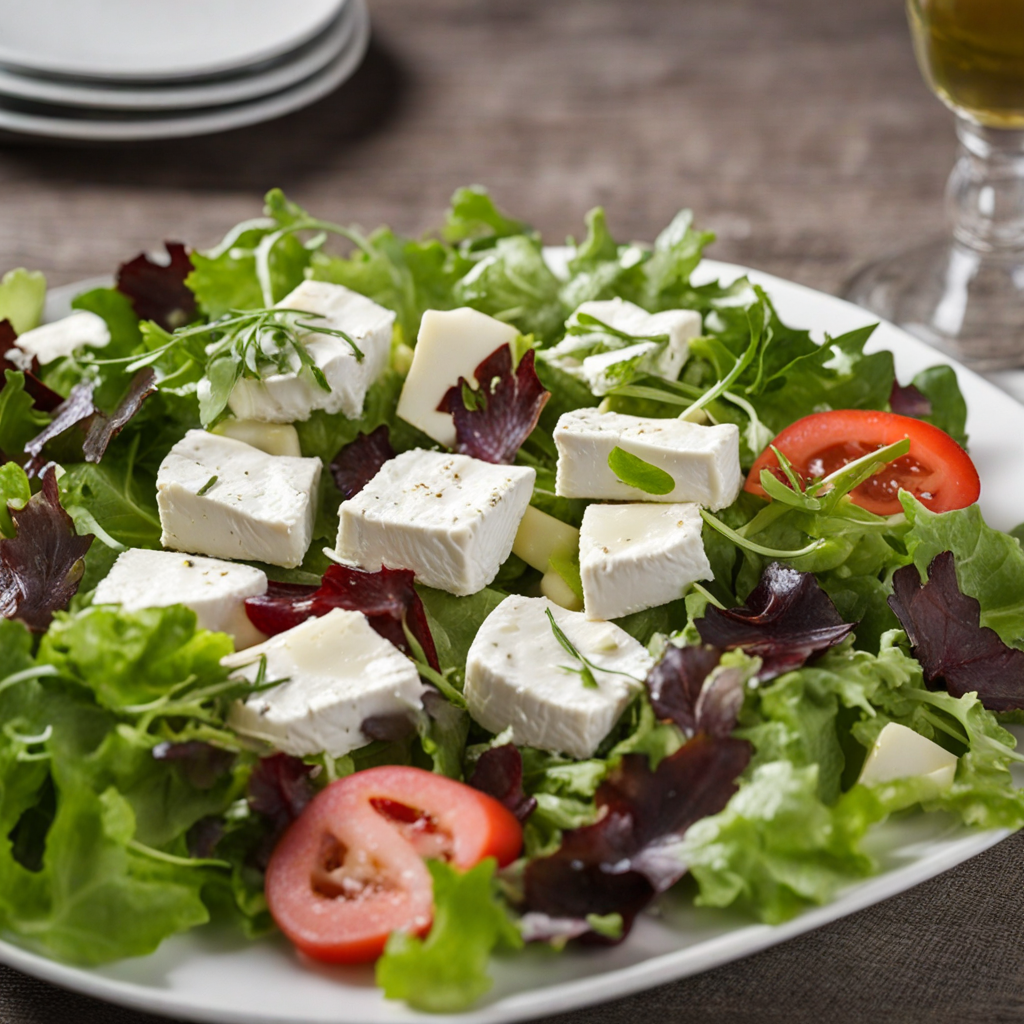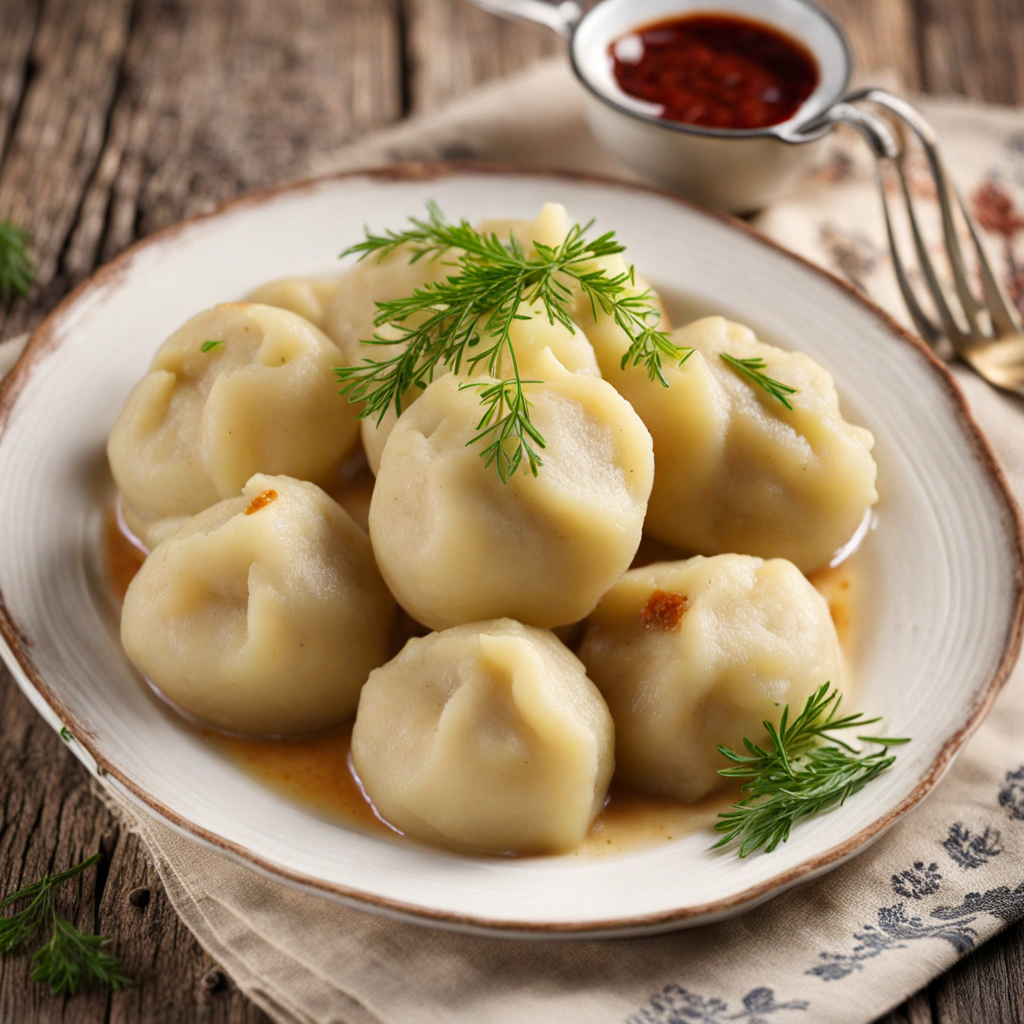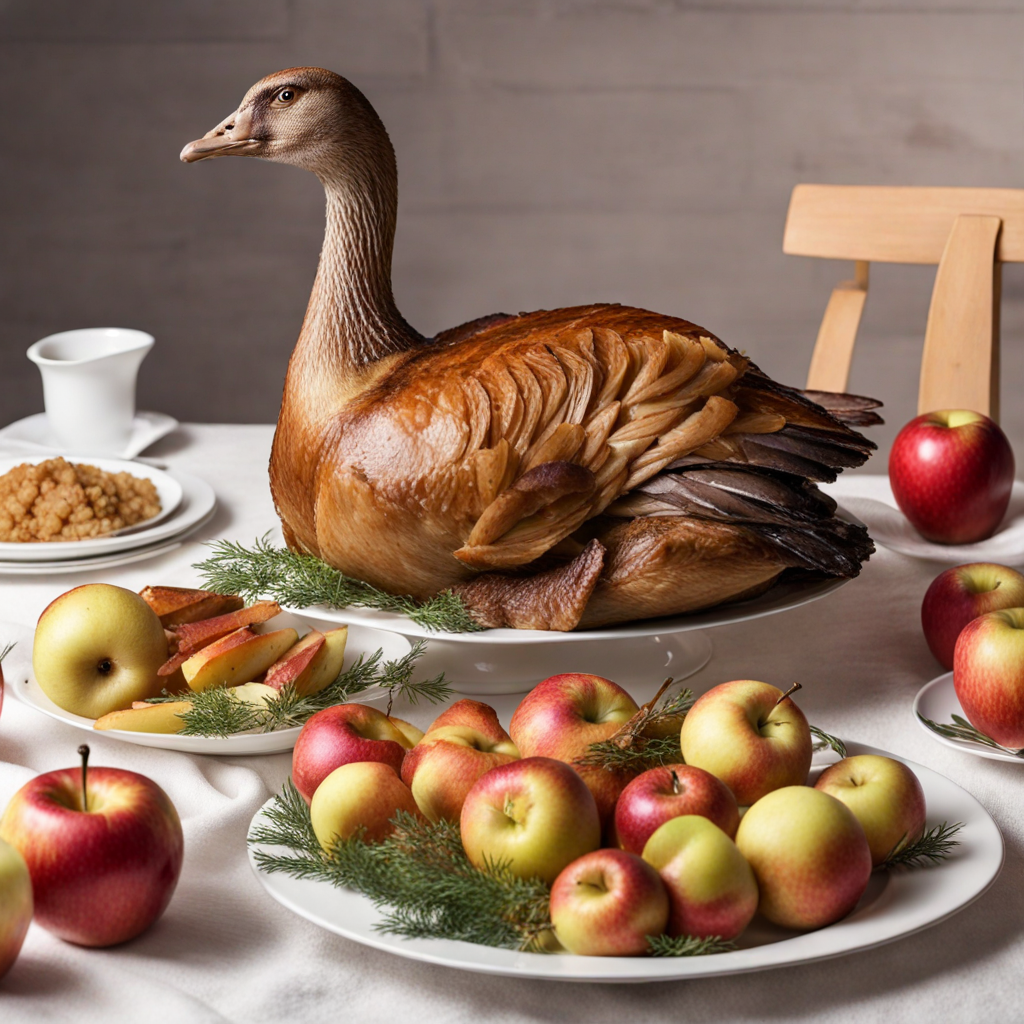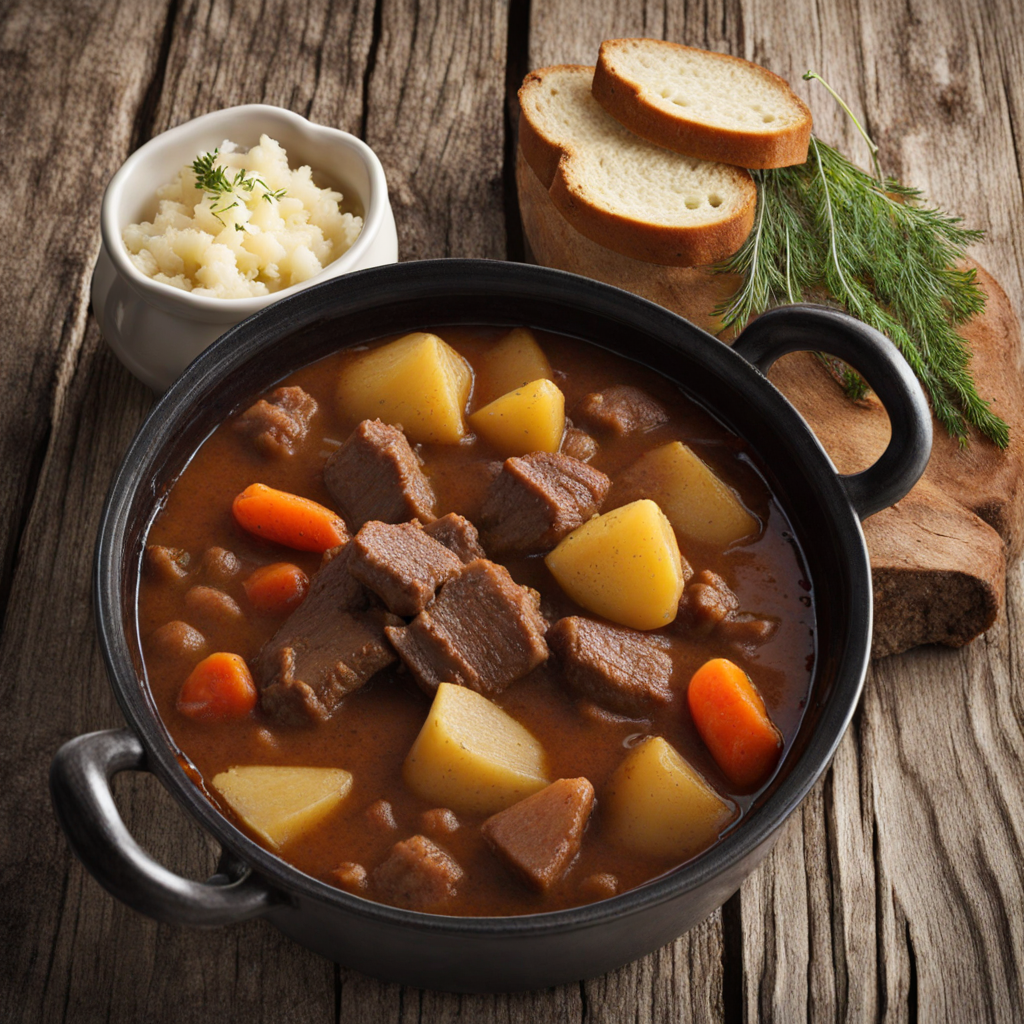Goat Cheese Salad
Goat Cheese Salad is a delightful Estonian dish that showcases the country's rich agricultural heritage and fondness for fresh, local ingredients. This salad typically features creamy, tangy goat cheese that is made from the milk of local goats, lending a unique flavor profile that is both rich and slightly acidic. The cheese is often crumbled or sliced and serves as the star of the dish, providing a luscious texture that contrasts beautifully with the crispness of the salad greens. Commonly used greens include mixed lettuce, arugula, or even foraged wild greens, which add a refreshing crunch and vibrant color to the plate. In addition to the greens, Goat Cheese Salad is often adorned with a variety of seasonal vegetables, such as ripe tomatoes, cucumbers, and radishes, which contribute to the salad’s overall freshness. Some variations may include roasted beets or caramelized nuts, such as walnuts or hazelnuts, which enhance the dish's complexity and provide an added layer of flavor. A drizzle of high-quality Estonian olive oil or a homemade vinaigrette made with local herbs complements the ingredients perfectly, tying the flavors together and elevating the dining experience. This salad not only offers a tantalizing taste of Estonia's culinary traditions but also reflects the country's commitment to using organic and sustainable produce. The balance of flavors—from the creamy goat cheese to the peppery greens and sweet vegetables—creates an enticing dish that is both satisfying and light. Enjoyed as a starter or a light meal, Goat Cheese Salad encapsulates the essence of Estonian cuisine, inviting food lovers to explore its unique and wholesome flavors.
How It Became This Dish
Kitsejuustusalat: A Culinary Journey through Estonia Estonia, the northern gem of the Baltics, is a land steeped in rich history, vibrant culture, and a profound connection to its agricultural heritage. Among its many culinary treasures, Kitsejuustusalat, or goat cheese salad, stands out as a delightful representation of the Estonian palate. This dish is not just a testament to the country’s agricultural practices but also a reflection of its evolving culinary landscape, shaped by tradition, geography, and modern influences. Origins of Kitsejuustusalat The roots of Kitsejuustusalat can be traced back to Estonia's agrarian past. Goat farming has a long-standing presence in Estonian rural life, largely due to the country's favorable climate and varied landscapes. The rugged terrain and abundant pastures make it ideal for raising goats, which are hardy animals capable of thriving in challenging conditions. Goat cheese, or "kitsejuust," has been a staple for centuries, often produced by families who relied on it for sustenance and trade. Historically, the use of goat cheese in salads likely emerged as a practical solution to utilize fresh produce from local gardens and farms. In Estonia, the growing season is relatively short, leading to a culinary culture that celebrates seasonal ingredients. The salad combines goat cheese with a variety of vegetables, herbs, and sometimes nuts or seeds, all of which are typically harvested in spring and summer. Cultural Significance Kitsejuustusalat is more than just a dish; it embodies the Estonian way of life. Food in Estonia is deeply tied to the land and seasonal cycles, and this salad is a reflection of the cultural importance placed on fresh, local ingredients. The dish is often served during festive occasions, summer gatherings, and family celebrations, symbolizing conviviality and the joy of sharing a meal with loved ones. Moreover, goat cheese has a unique significance in Estonian culture. It is often associated with local craftsmanship, as many small-scale farmers produce artisanal goat cheese. These producers not only contribute to the local economy but also maintain traditional methods of cheese-making that have been passed down through generations. As a result, Kitsejuustusalat serves as a canvas for showcasing regional diversity, with variations depending on the specific ingredients available in different parts of the country. Development Over Time As Estonia navigated through the tumultuous waters of history, from its medieval roots to Soviet occupation and eventual independence in 1991, its culinary landscape evolved alongside its political and social changes. The revival of traditional foods, including Kitsejuustusalat, gained momentum as Estonians sought to reconnect with their cultural identity after decades of foreign influence. In the late 20th century and early 21st century, Estonia experienced a culinary renaissance. Chefs began to experiment with traditional dishes, reinterpreting them through contemporary cooking styles and global influences. Kitsejuustusalat became a subject of innovation, with chefs incorporating diverse flavors, presentation styles, and techniques while still honoring its traditional roots. This evolution has led to a broader appreciation for Estonian cuisine both domestically and internationally. The rise of the farm-to-table movement played a significant role in the salad's development. As more people became aware of the benefits of eating locally sourced and organic produce, the ingredients in Kitsejuustusalat began to reflect this trend. Seasonal vegetables such as radishes, cucumbers, and various leafy greens were increasingly favored, often sourced directly from local farmers’ markets. The inclusion of fresh herbs, such as dill or parsley, not only enhanced the flavor but also highlighted Estonia's rich agricultural bounty. In recent years, as the global palate has become more adventurous, Kitsejuustusalat has found its way onto menus in upscale restaurants and bistros throughout Estonia and beyond. Chefs have taken creative liberties with the salad, sometimes pairing it with unexpected ingredients like roasted beets, pickled vegetables, or even fruits like apples or pears. Each variation tells a story of blending the old with the new, showcasing a dish that is both familiar and fresh. Ingredients and Preparation The beauty of Kitsejuustusalat lies in its simplicity and versatility. A traditional recipe typically includes a base of mixed greens, often complemented by a variety of colorful vegetables. Fresh goat cheese is crumbled atop the salad, providing a creamy and tangy contrast to the crispness of the greens. Common additions may include: - Seasonal Vegetables: Radishes, cucumbers, bell peppers, and cherry tomatoes. - Herbs: Fresh dill, parsley, or chives to add an aromatic touch. - Nuts and Seeds: Toasted walnuts or sunflower seeds for added texture and flavor. - Dressings: A light vinaigrette made from local oils and vinegars, sometimes flavored with honey or mustard. The preparation of Kitsejuustusalat is often a communal affair, with families and friends gathering to prepare the ingredients together, further reinforcing the dish's cultural significance. It is a representation of Estonian hospitality, where sharing food is seen as a fundamental aspect of social interaction. Conclusion Kitsejuustusalat is more than just a goat cheese salad; it is a culinary embodiment of Estonia’s rich agricultural heritage, cultural resilience, and evolving gastronomic landscape. From its humble origins to its modern interpretations, the salad reflects the values of community, sustainability, and the joy of cooking with fresh, local ingredients. As Estonia continues to carve its identity in the global culinary scene, Kitsejuustusalat remains a beloved dish that tells a story of tradition and innovation, inviting both locals and visitors to partake in the flavors of this remarkable country. Whether enjoyed at a festive gathering or a quiet family dinner, this salad is a celebration of Estonia's enduring connection to its land and the people who cultivate it.
You may like
Discover local flavors from Estonia







